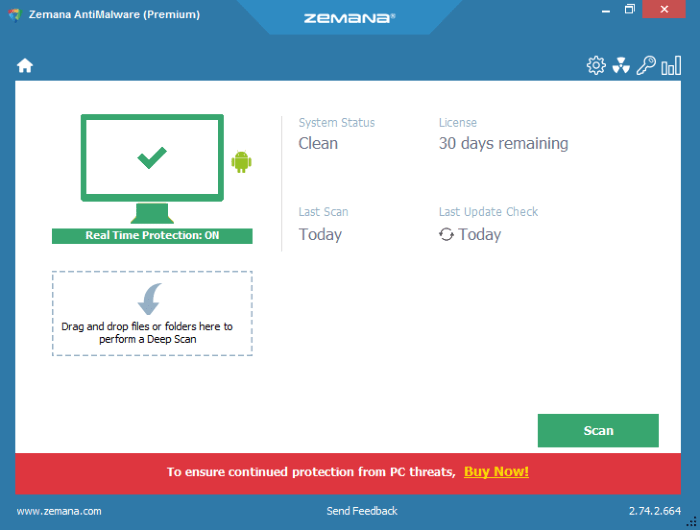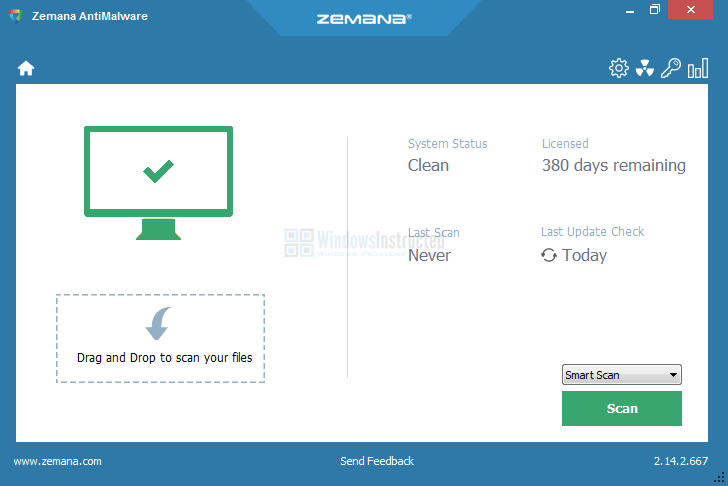
In the menu to the left there are the usual options, such as quarantine, whitelist, and reports. When looking at the interface, the most noticeable thing is the system’s health check icon. Whenever there’s attempt to install something to your computer, Zemana also checks whether it’s a Potentially Unwanted App (PUA) or not. This allows it to stay ahead of the game when dealing with trojans, worms, rootkits, phishing attempts, adware, as well as many other threats lurking online. When dealing with new threats, Zemana doesn’t only rely on the existing threat definitions, but looks for any piece of suspicious code that could possibly threaten your computer’s security. This implies you won’t be able to tell Zemana to wake up your computer and scan it while you’re not using it.Īs it sources the threats database direct from the cloud in real-time, Zemana can react immediately.

Unfortunately, this prevents you from automatically checking each and every file on your system in a single scanning session.Īnother downside to Zemana’s Smart Scan is the lack of scheduling options. But its Smart Scan is comparable to a quick scan option readily available in other anti-malware and anti-virus software.

By integrating into the Windows’ system shell, the file scanning option is available directly from the right-click menu.Īs stated, Zemana lacks in the full system scan department. Scanning PowerĪ great thing about Zemana is that it allows you to scan individual files super-easy. Reason being that they haven’t seen that exact type of threat before and can’t recognize it for what it is. Compared to that, other malware software would allow the potential hazard to sneak in easily.

Rather, it learns how to detect new threats and report them.

Thanks to this, Zemana’s service doesn’t have to rely on the existing database of known threats.


 0 kommentar(er)
0 kommentar(er)
